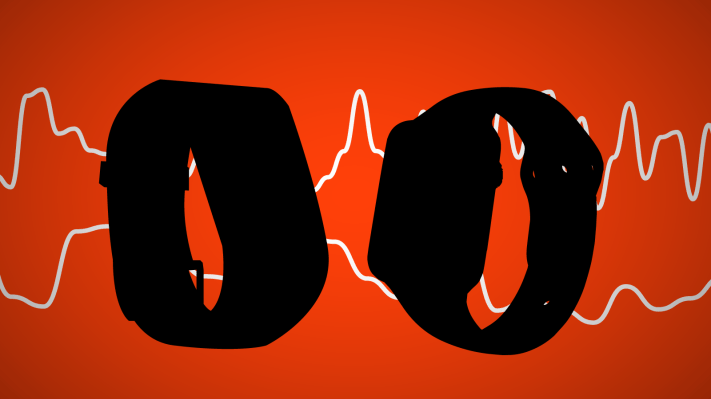A few weeks ago, Fitbit publicly admitted that it had no plans to follow the growing crowd of fitness trackers and apps that are rushing to integrate with Apple’s HealthKit and Health app. In response, it seems, Apple has pulled Fitbit devices from its retail stores. And now we know why — because Fitbit is building a device that will compete directly with the upcoming Apple Watch.
Yesterday The Verge published details related to a soon-to-be-released wearable device called the Fitbit Surge. According to the report, the Surge will be a $250 wearable with a watch-like display, built-in GPS tracking and heart-rate monitoring that will move Fitbit beyond its existing step-based activity tracking.
The new device will give Fitbit owners a lot more sophisticated health data than had previously been available on its platform. In doing so, Fitbit could court a wider range of fitness fanatics who might have purchased more expensive GPS trackers or health monitors from the likes of Garmin or TomTom, or heart-rate monitors from companies like Polar. It could also potentially open up the market to Fitbit customers who want to track more of their own data.
At the same time, Fitbit isn’t the only company going after this opportunity. Basis, which recently sold to Intel, has announced another smartwatch with heart-rate monitoring called the Peak. And Pebble, while it doesn’t do heart-rate monitoring, is moving in on Fitbit’s turf by adding background sleep and activity monitoring features into its smartwatch.
And of course, there’s the Samsung Gear S, which also includes a GPS sensor, an accelerometer, gyroscope, UV detector, barometer, and heart rate monitor and feeds into the Android Wear health data ecosystem.
But the elephant in the room is the Apple Watch, which the company announced at its annual iPhone event in September but doesn’t plan to make available for sale until early next year. The Apple Watch will offer up push notifications and access to various applications, but it is expected to have a fair amount of health tech stuff built-in. That includes heart-rate monitoring, activity tracking and the like, which Apple users will be able to feed into the Apple Health app.
Of course, Apple wants to aggregate data from other applications and devices into the app. And for the most part, it’s received a fair amount of interest from app and device makers feeding into the Apple Health ecosystem. App makers like Strava, MyFitnessPal, and LoseIt are building for HealthKit, while device companies like Misfit Wearables and Withings plan to work with the SDK as well.
There are some advantages to doing so: Apple is more likely to feature mobile apps that work within its health and fitness ecosystem than those that don’t. Meanwhile, device makers that work with HealthKit can probably expect more shelf space in Apple retail locations than those who don’t.
It’s unclear if that was the reasoning behind Apple’s removal of Fitbit devices from its stores, but it does seem that Fitbit sees the Apple Watch and HealthKit as competitive to its own devices and health-tracking platform. But to date, it has a pretty strong reason to keep going it alone — after all, Fitbit owns about 70 percent of the fitness tracking market according to the NPD Group.
We’ll see if Fitbit budges when the Apple Watch is actually available. However, it appears the Surge — along with the Charge and Charge HR fitness trackers — will likely make it into stores in time for the holidays, beating Apple by at least a few months.
